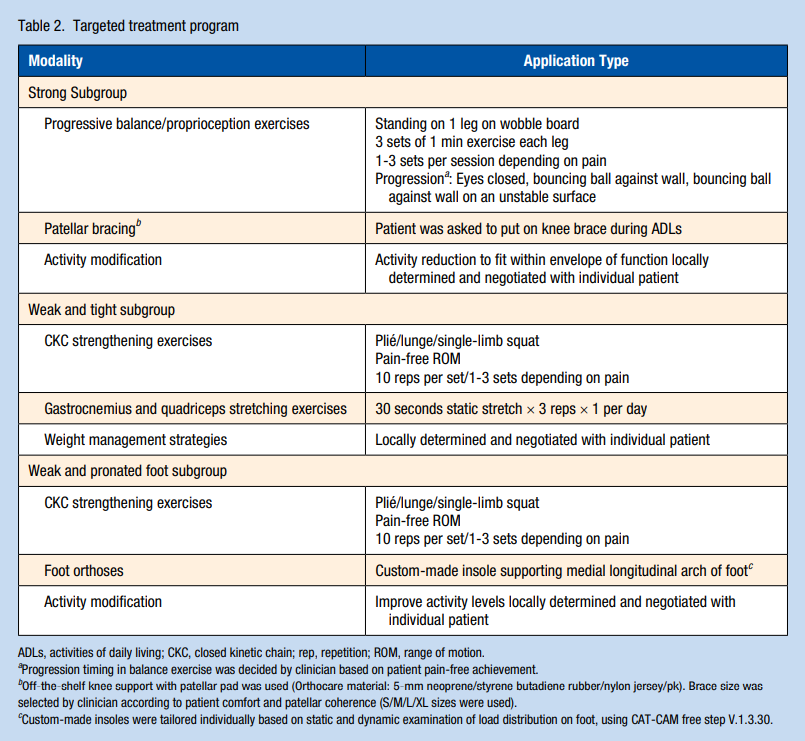When Should We Repair Partial-Thickness Rotator Cuff Tears? Outcome Comparison Between Immediate Surgical Repair Versus Delayed Repair After 6-Month Period of Nonsurgical Treatment
Reviewed by Tyler Tice, PT, DPT, OCS, ATC
Partial-thickness rotator cuff tears (PTRCTs) are very common shoulder-related musculoskeletal injuries, especially in the middle-aged patient population, that can detrimentally impact activities of daily living and result in increased pain levels or functional impairment. Generally, PTRCTs are more painful than full-thickness rotator cuff tears (FTRCTs) and account for a higher proportion of rotator cuff tears. However, many aspects concerning the most effective management of PTRCTs are still controversial in the available scientific literature. This controversy is due to the numerous intrinsic and extrinsic factors that contribute to an individual cuff lesion and prognosis of PTRCTs for each patient.
The aim of this randomized controlled trial was to investigate the ideal timeline for surgical intervention for patients with PTRCTs. There is a very generalized concern that the size of a partial-thickness rotator cuff tear may increase over time for patients if surgical intervention is considerably delayed. Similarly, it is clearly established in the evidence-based literature that there is no spontaneous healing of PTRCTs without surgical treatment. Researchers in this clinical study were interested in whether immediate surgical treatment of PTRCTs would result in better outcomes compared with delayed surgical treatments after nonoperative treatment. These researchers hypothesized that 6 months of preoperative nonoperative treatment would result in better clinical outcomes than immediate surgical repair for PTRCTs.
78 total patients with PTRCTs were enrolled into this randomized controlled trial. Patients were included in the study if their proportion of torn tendon thickness was greater than 50% and experienced less than 3 months of symptom duration. These patients with PTRCTs were then allocated into two treatment groups through computer-generated randomization: an immediate arthroscopic rotator cuff repair surgery group within 1 week of diagnosis (Group 1), and a group that received 6 months of conservative, nonoperative treatment prior to surgery (Group 2). The non-operative treatment group included instructions on activity modification, NSAIDs, corticosteroid injections into the shoulder joint, and physical therapy.
Following the arthroscopic rotator cuff repair surgeries, the same standardized postoperative rehabilitation protocols were applied to both groups. Each patient wore an abduction brace for the shoulder for 1 month after the operation. Following one month post-operation, pulley exercises were then prescribed to increase forward flexion active range of motion of the shoulder. The patient could then be progressed to isometric exercises in all planes of shoulder motion once passive range of motion was restored to 90%. Outcome measures evaluated at 3 months, 6 months, 12 months, and 24 months included: ASES scores for overall shoulder functional ability, VAS scores for pain levels, and active range of motion in the shoulder (forward flexion, external rotation at side, external rotation at 90 degrees of abduction).
The results of the randomized controlled trial were that both groups showed significant improvements in terms of functional scores and pain VAS scores compared with the initial period. However, at 6 months postoperatively, the group 2 patients (6 months of nonoperative treatment) showed significantly lower pain VAS score and higher ASES Scores than group 1 patients (immediate rotator cuff repair surgery). There were no significant differences between the 2 groups in ROM or functional outcomes at the 24-month follow-up mark.
Clinical Application:
Both immediate surgical repair and delayed repair after nonoperative care were effective in improving clinical outcomes of patients with PTRCTs. Immediate surgical repair is not clinically crucial for the treatment of patients with PTRCTs and a trial of preoperative conservative management may be warranted for patients that have symptomatic PTRCTs.
References:
Kim Y-S, Lee H-J, Kim J-H, Noh D-Y. When Should We Repair Partial-Thickness Rotator Cuff Tears? Outcome Comparison Between Immediate Surgical Repair Versus Delayed Repair After 6-Month Period of Nonsurgical Treatment. The American Journal of Sports Medicine. 2018;46(5):1091-1096.

